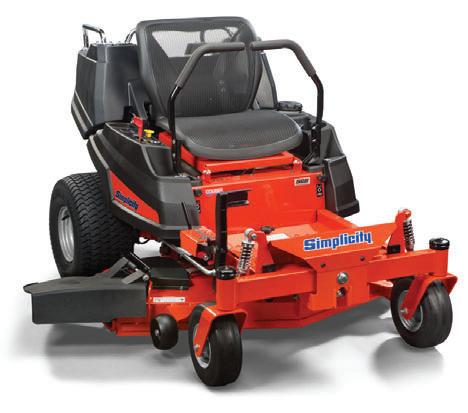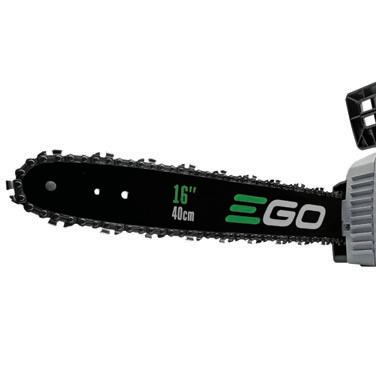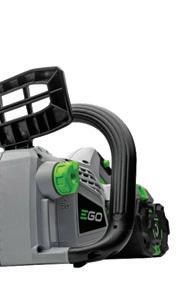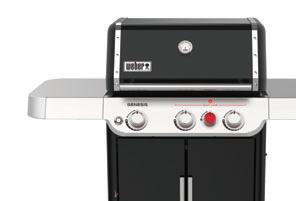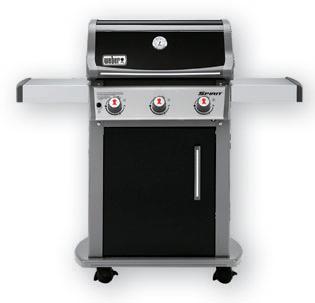






















































































































































Once the days begin to grow a little bit longer and the numbers on the thermometer creep a tad higher, outdoor entertaining season is right around the corner. Homeowners may be anxious to once again return to the comforts of their backyards. However, their patio furniture may not be ready for lounging just yet.



Some simple cleaning strategies make it easy to brighten outdoor furniture


made of metal, glass, wood, and plastic. Before homeowners know it, their backyards will be ready for outdoor entertaining season.
Proper storage


Storing outdoor furniture during the colder months of the year is a great way to protect items from the elements. This may involve careful shrink-wrapping and keeping items outdoors, or by moving furniture indoors to a shed or garage. Cleaning the furniture one last time before storing it also can be handy.
Remove stuck-on debris












Inspect furniture and be prepared to remove any stuck-on debris, such as





bird droppings, sticky food residue or even cobwebs and insect nests. Be sure to use a cleaning tool that is safe for the material you are cleaning. Test an inconspicuous area of the





furniture first to ensure your tools don’t damage the furniture. For example, many scrub brushes can scratch glass or aluminum.
Make a thorough cleanser



Clean stains off of furniture with a versatile cleanser. A mild cleaner can be made by mixing 1⁄2 cup baking soda with 1 gallon of warm water, according to the experts at Better Homes & Gardens. Regular dishwashing detergent also can be mixed with water, as it has a mild bleaching agent. This cleanser can be used on plastic resin furniture or metal furniture, which are popular patio
furniture materials.
Patio fabrics




Check the cleaning instructions of outdoor fabrics, as there might be specific instructions on the tags. In some cases, fabric may be removed and washed in a washing machine on a gentle setting. A solution of dish soap and warm water also is a gentle way to clean outdoor fabrics. Once items are clean, HGTV advises applying a water-repellent fabric protector to minimize staining and maintenance.
Strip or sand
Wood furniture may need specialized care. If stains cannot be removed with a mild cleanser, then hard woods like teak can be surface-sanded to restore items’ original look.

Pressure washers can often do more harm than good to patio furniture, so it’s best to look for an alternative way to clean them. Usually a bit of elbow grease and a cleanser is all that’s needed. Give the cleaning product time to work. Wipe down and dry the furniture thoroughly to prevent the growth of mildew.














































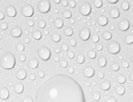


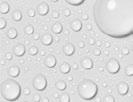
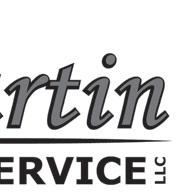





Oven grime. No one likes it, but anyone who has ever owned an oven has probably dealt with it at some point in their life. The methods for eliminating oven grime vary in difficulty according to oven type. If you own an oven with some sort of cleaning feature, you will probably have an easier time eliminating the grime than if you don’t.
Older ovens rarely offer any sort of cleaning features,







whereas newer ones are either self-cleaning or continuous cleaning. While self-cleaning ovens burn off oven grime at very high temperatures, continuous cleaning ovens generally burn off grime as they cook at normal temperatures. No matter which type of oven you own, you will want to clean up any spills as they occur. This will make overall cleanings easier later.



When preparing to clean

your oven, you must find out first if it offers any sort of cleaning features. If not, you will need to purchase some sort of oven cleaner and apply it according to the manufacturer’s directions. Usually this will entail spraying the interior with the cleaner, letting it sit overnight or heating it up, and then wiping out the residue with a damp cloth. For stubborn spots, you may need to get out a scrub brush. Whenever working with oven cleaner, it is best to open the windows for ventilation and use gloves to prevent contact with the chemicals.


If you own a self-cleaning oven, you can disband with the cleaner and let the oven
do the work for you. In order to use this feature, you need to get out your owner’s manual and follow the instructions provided. With most ovens, you simply select the self-cleaning


option and the oven will lock its door, heat up to 900 or 1,000 degrees, and burn off all debris. When complete, the oven will turn off and unlock its door when cool.
All you will have to do then is wipe out any remaining ash with a damp cloth. When using this feature, make sure you open the windows for ventilation and remove any pet birds from the premises,








as the fumes could kill them.
If you own a continuous cleaning oven, you probably won’t have to do much to clean it. This type of oven contains a chemically treated, textured finish that will spread out most spills as they happen and oxidize them quickly at normal cooking temperatures. All you’ll have to do then is wipe out any ash that remains. For spills involving milk, cheese or sugary substances, you may need to set the oven at 475 degrees or higher in order for the oven to burn them off.

With cleaners and cleaning features, ovens are a lot easier to clean today. For those who own self-cleaning or continuous cleaning ovens, there may be little scrubbing involved. If you don’t own one of these types of ovens, keep them in mind for your next purchase.
















Spring is a time of year when change is in the air. Trees are budding, plants are flowering, and homes laden with dark or heavy fabrics and clutter could use some lightening up.
Spring cleaning projects are popular this time of year as residents take inventory of their living spaces and aim to declutter, clean and increase efficiency. Some people find the prospect of getting organized overwhelming. Here are some tips that can help anyone master spring cleaning.
• Create a plan. Make a checklist and establish a cleaning plan of attack. Focus on areas that are not regularly cleaned, as they probably need a little attention.
• Assemble your cleaning kit. Spring cleaning can be slowed down considerably if you don’t have all of your equipment at the ready. Items to have on hand include an all-purpose cleaner, concentrated clean-




er, microfiber cloths, paper towels, mop, vacuum, dusters, and a squeegee. Adjust your equipment based on the task at hand.
• Curate your cleaning playlist. Create a playlist with songs that will get you moving and motivated to clean.


• Work from top to bottom. Work efficiently by cleaning shelves, ceiling fans and other elevated items first, as dust and debris will trickle

down and need to be cleaned next.
• Purchase or rent a carpet cleaner. According to the experts at Clean That Up, carpets help filter indoor air by trapping debris and allergens. By deep cleaning carpets, homeowners can improve the indoor air quality of their homes. Use a carpet cleaner on a warm, dry day so that windows can


be opened and cross breezes will help dry the damp rug.

• Clean windows. Wash windows inside and out and utilize their screens to help brighten indoors spaces.

• Deep clean the kitchen. Clean out and disinfect the refrigerator by wiping it down with warm water and baking soda or a vinegarand-water solution. While in the kitchen, set the oven to the self-clean function so it becomes cleaner as well.
Homeowners also can focus on cleaning curtains (including shower curtains), steam-cleaning upholstery, removing clutter from closets, cleaning out the dryer vent and duct tubing, wiping inside kitchen drawers, and vacuuming under beds and other furniture.

Spring cleaning can bring the revitalizing nature of this beloved time of year into your home.



Outdoor living is wildly popular, as more and more homeowners are bringing elements once reserved for home interiors into their backyards. When designing outdoor living spaces, homeowners may learn about biophilic design, an architectural concept that aims to incorporate natural elements into outdoor living spaces. Proponents of biophilic design say it satisfies an innate human need to affiliate with nature, thereby helping to reduce
stress that people may experience after being stuck indoors for much of their days.

Biophilic design is often part of a home interior design, but many homeowners also embrace it when designing their outdoor living spaces. For example, surrounding outdoor living areas with noninvasive plants, flowers and trees and using natural materials like wood and stone when building such spaces are great ways to embrace biophilic design and create a tension-free ambiance in outdoor living spaces.
& trim your landscaping
• Change air filters

• Have your system inspected and serviced








WE’RE JUST AS TRUSTY, WITHOUT THE WET NOSE. WE ARE HERE FOR YOU. Call or go online to schedule your summer maintenance or to ask for a free estimate to replace your air conditioning



An inviting backyard can serve as a welcome retreat from the hustle and bustle of daily life. After a long day at the office or an exhausting day spent transporting kids to and fro, it’s hard to resist the allure of a peaceful outdoor space in which to unwind.
Privacy is a key component of any backyard oasis. Some homes may be so remote that privacy isn’t an issue. But many suburban homeowners recognize they might need to tweak their landscapes if they hope to create a private oasis outside.
Fencing or planting?
Most homeowners looking to create more privacy on their property will have to choose between fencing and

planting. Fencing provides immediate privacy because, once it’s installed, no one can see into the yard. Fencing also doesn’t require watering or other immediate upkeep, which will be necessary when planting to ensure tree roots can establish themselves.

But planting has its benefits as well. Planting for privacy is essentially creating a living fence that can grow over time and provide even more privacy as trees reach maturity. Plants also tend to be less costly than fencing. The home renovation experts at BobVila.com estimate that fencing projects typically cost between $1,667 and $4,075. However, fencing
projects can cost considerably more than $4,000, especially for homeowners with large properties they want to enclose. Large, mature trees can be expensive, though it’s unlikely they will cost as much as fencing. In addition, fencing requires more maintenance and will potentially need to be replaced, while native trees won’t require much upkeep and can last for generations.

Planting
Homeowners who choose to plant for privacy will next have to decide which type of plants to add to their properties. Evergreens provide year-round privacy because they don’t shed their leaves, so these are the ones



60’-70’ and can spread as wide as 25’. The Leyland cypress grows fast, which may appeal to homeowners who don’t want to wait to establish privacy.
most often chosen when creating a living fence. A number of varieties of evergreen trees can do the job, but it’s important that homeowners consult with a landscape architect prior to choosing trees so they can ensure the trees will thrive when faced with the growing conditions on their
properties. During such a consultation, homeowners may discuss the following popular privacy trees.

• Leyland cypress: The Arbor Day Foundation® notes that the Leyland cypress is popular for hedges and boundaries, likely because a typical tree reaches a mature height of

• Green Giant Arborvitae: There are different varieties of the arborvitae, but the Green Giant tends to be the go-to option for privacy. The ADF notes that Green Giants will grow up to three feet per year until they reach maturity, providing a fastgrowing option for privacy planters. The Green Giant can spread as wide as 20 feet at maturity, which is another attribute that makes it so popular among homeowners desiring privacy.
• Eastern White Pine: The ADF notes that the eastern white pine, which can reach heights as high as 80 feet, is favored in spacious yards.

That’s likely due to its height and its potential spread, which can reach 40 feet. Homeowners who choose the eastern white pine might like it for its resemblance to a Christmas tree, and in fact it is widely used for that purpose. The privacy provided by the eastern white pine is significant, but it might be best suited to especially large properties. Whether it’s fencing or planting, homeowners have many options to consider as they seek to create more privacy on their properties.





Laminate flooring manufacturers have recognized the void of a cost-effective product that offers ease of installation and minimal tools and know-how. Enter the popular floating laminate wood floor.
Laminate flooring consists of several components that are bonded together to create the finished product. It includes a core, usually constructed of high density fiberboard (HDF), and a composite wood product backed with a sturdy plank that is generally coated in resin. The resin resists moisture and helps protect the product from warping and rotting. The top layers of the floor include a wearresistant decorative surface, usually an authentic woodgrain pattern, and a tongue

and groove design for interlocking the pieces of flooring.






WHY FLOATING?

The terms “floating” or “floatin” mean that the laminate floor is not attached to the floor underneath. In a typical floating installation, only the joints are glued or attached to each other, leaving the body of the floor unattached. However, some varieties do not require glue at all. Generally, a gap around the



perimeter is left to allow for expansion and contraction of the boards which enables floor movement. This gap is covered with a decorative molding.


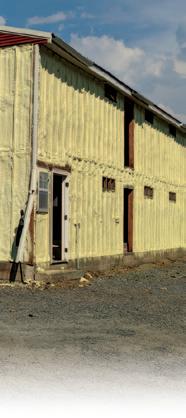
Typically, these floors can be installed over several different subfloors in various rooms of the home, making them particularly attractive to DIYs. Plywood, concrete slab, sheet vinyl flooring, hardwood flooring or just about any other flat hard surface is suitable. Carpeting, however, will need to be






removed in order to install laminate. Some varieties are unsuitable for bathrooms or other areas with excess moisture. Check the product carefully to see its room applications.


EASY

Installation can be handled by one person, but moves much more smoothly with an extra set of hands. Depending upon the size of the room, you may even be able to complete it in a weekend.



Warm weather and extra hours of sunlight spark flowering trees and plants to bloom anew. This is the time of year when the air is sweet with the aroma of blossoms and the familiar hum of insects can be heard all around.

Not all “bugs” are the same this time of year. While you probably won’t want ants invading your backyard grill fest, the presence of bees nearby can be a good thing — even if those curious yellow-and-black critters get a little close for comfort from time to time. That’s because almost 90 percent of wild
plants and 75 percent of the leading global crops depend on animal pollination, indicates the World Wildlife Federation.

Bees are remarkable creatures in small packages.
The following are some bee facts to buzz about, courtesy of the WWF, Save the Bees™, NASA, and the Texas A&M University Honey Bee Information Site.
• There are roughly 20,000 species of bees around the world. Most of them are solitary bees.


• Bees have five eyes. Two of the eyes are large
compound eyes with hexagonal facets. The other three are small, simple eyes.
• Honeybees have a

move called the “waggle dance.” It is a clever way of communicating to tell them where to go to find the best sources of food.
• Bees can carry up to 122 times their body weight in pollen and nectar.
• Bumblebees leave footprint scents behind. They are able to distinguish between their own scents, the scent of a relative and the scent of a stranger as they look for food. They also can avoid flowers already visited.

• Should a queen bee perish, the hive workers will select a new young larva and
feed it a special food called “royal jelly.” The larva will develop into a fertile queen.
• Bees flap their wings 190 to 200 times per second. They can fly up to 15 miles per hour.
• Female bees can sting; males do not. Losing the stinger will cause the bee to die. The honeybee only can sting once because its stinger is barbed. Bumblebees and hornets can sting multiple times because they have smooth stingers.
• It can require nectar from two million flowers to make one pound of honey.

• Many bees are not aggressive. Simply moving away from them can prevent a person from being stung. Generally, bumblebees and honey bees will only sting by accident or if a nest is being disrupted.
• Wasps are different from bees in that they are mostly known to be predators. They eat other insects and often food that people eat, which is why wasps are more likely to be found around your cookout. Bees tend to be covered in hair, while wasps (which include yellow jackets) are smooth.
Bees are remarkable creatures and should be celebrated as the weather warms up.


Exposure to the elements can take its toll on the exterior of a home. Dirt, mold and mildew can compromise the look of a home and yard, which is why many people begin the spring season by dusting off the pressure-washing machine and making resolutions to strip the dirt off of siding, furniture and patios. However, serious injuries can result if a pressure washer is used improperly. Getting schooled in pressure-washer safety is essential to preventing a trip to the emergency room.
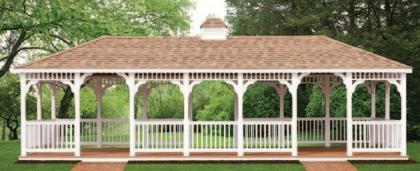

It can be easy to underestimate the power of a pressure washer. An electric-powered machine may generate up to 1,000 pounds per square inch (psi) of water pressure. Gaspowered machines are even more dynamic, offering pressure up to 4,000 psi. That force coupled with wet surfaces can easily cause falls, slips and abrasions. Pressure washers may even cause blindness when chemical cleaners are used in conjunction with the pressure washer.





It is advisable to leave pressure washing to a professional. However, for homeowners who do choose to try this cleaning method, safety precautions are essential.








• Dress properly by donning rubber-soled shoes to prevent slips on wet surfaces.

• Wear protective eyewear to shield the eyes from any projectiles or injury from the water spray itself.
• Wear sturdy gloves with grips so you can have a firm hold on the nozzle while cleaning.
• Be sure to read all of the safety precautions and








operation instructions in the manual prior to operating the pressure washer. Do not use a washer if the instruction manual is missing.
• Remove any debris surrounding the area you will be cleaning. This may include sticks, rocks, toys, and any other items that can be blown around with
the pressure washer spray.
• Use a safety harness if you will be using a pressure washer while on a ladder or elevated surface.
• To lessen the chance of high-pressure injection (HPI), which is when water and other debris penetrates the skin resulting in deeptissue damage, broaden the
spray on the nozzle so it isn’t piercing like a needle. HPI can cause infections so great that they may require amputation.
• Use an extension cord that is water-resistant and acceptable for outdoor use. Ensure there are no breaks in the cord to minimize the chance for electrocution.
• Avoid hot water and steam pressure washers to eliminate the chance for burns.




Thousands of people are estimated to be hospitalized due to pressure-washer injuries. Many of these injuries can be prevented simply by heeding safety precautions and following the rules of operation.

You spent many an afternoon as a kid admiring the neighborhood gardens with your aunt. While most of the


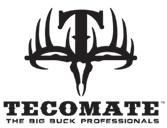

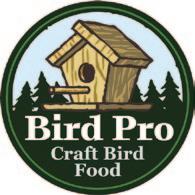















gardens looked like a scene from a magazine spread, there were a few that didn’t quite make the cut, either because of neglect or excessiveness. There was one, in particular, that stuck out like a sore thumb
because of all of the garden art. There were statues everywhere. You could spend all afternoon just looking at all of the art in that garden. Apparently, the gardener liked statuary, perhaps a little too much.
Now that you’re older, you’d like to add flair to your garden with some statuary, but you don’t want to repeat that garden scene from your childhood. Here are a few tips:
• Less is more. Limit yourself to pieces that really shine. Twenty statues of various saints woven throughout your garden will not make the same statement as one large statue of St. Francis of Assisi, patron saint of animals and the environment.
• Groupings are best. When possible, group pieces that



















complement each other. Bird statues here and there will not have as much impact one St. Francis of Assisi statue overlooking smaller bird statues.
• Placement is everything. Set up groupings amid foliage rather than wherever there is a spot. The statue of St. Francis of Assisi set in the first open spot will not be as striking as it will overlooking smaller bird statues under the cherry tree in the center of your garden.

Once you have your statuary in place, take the time to care for it. The










elements will take a toll on the statues after a while, speeding up the aging process. Wash your statues regularly and apply a coat of sealer to them annually. Should a piece ever suffer a chip, crack or break, arrange to have it repaired or refinished. Depending upon the extent of the damage, you may be able to do this yourself.
Finally, protect the statuary in the winter. Don’t leave the pieces to freeze in the snow and ice. Cover them up or bring them inside.
Storybook pages are filled with images of stone cottages covered in ivy, making them appealing to the young and old alike. Who wouldn’t enjoy coming home to an old English cottage wrapped in ivy? Long, tender, green tendrils trailing down the side of a home can make for a lovely scene. Upon closer inspection of the crumbling mortar underneath, however, you might see that the old adage, “Looks can be deceiving,” is true. If not attended to carefully, ivy can make for some real
damage to homes.
Ivy in general is a very tenacious, invasive plant. Once it starts growing, it can be difficult to stop, and once it gets its claws into the cracks and crevices of your home’s exterior, it can be very hard to remove. Ivy has been known to push its way into the smallest of spaces in brick mortar, siding, stucco and more, penetrating walls and windows, invading rooms and peeking out from behind electrical sockets.
While it will push through cracks and crevices, ivy is not strong enough to make them. Solid, well-constructed surfaces such as masonry walls can handle it. Old, weak brick, dry-stacked
walls, porous wood and any other areas prone to cracks and crevices, on the other hand, cannot. Such substances are highly susceptible to ivy, and once it takes hold and weaves its way throughout the structure, the damage can be vast, ranging from leaks to pest infestation to total loss.






Pulling down the ivy may not be the right fix either. While it will prevent further growth, it may also lead to even greater damage. Boards, bricks, chunks of paint and stucco and who knows what else have been known to come down with every strand of ivy pulled. Entire wood structures have fallen down once the ivy holding them
together was removed.

Homeowners that suspect damage due to ivy should not undertake the removal of it themselves. They should hire a professional to determine the best way to remove the ivy with the least amount of damage possible. They might also be able to repair any resulting damage.
There is nothing wrong with having ivy in the landscape. It is best to contain it to wellconstructed structures and keep it away from all gutters, trim and woodwork in general. Only then can homeowners rest assured that the ivy will not take a toll on the condition of their home.


Butterflies and hummingbirds can add magic to any garden, and it’s easy to invite them in. Just select the right plants. Butterflies like bright colors while hummingbirds and butterflies both like blooms with plenty of nectar.
Easy-to-grow plants that attract pollinators include butterfly bushes, Rose of Sharon, and Weigela.




• Butterfly bush (Buddleia) is a favorite of butterflies and hummingbirds. The sweet














fragrance and bright summer flowers are appealing to people, too. Unfortunately, traditional butterfly bush varieties have a tendency to get overgrown and leggy. Regular pruning is often needed to keep them in check.

New Lo & Behold ‘Blue Chip’ Buddleia is a miniature butterfly bush with all the fragrance and butterfly appeal of older varieties but in a smaller package.
It stays just 24”30” tall and wide without any pruning, and produces abundant lavender blue flowers from midsummer to frost. This continuously blooming butterfly magnet does not need deadheading, and





makes a fantastic lowmaintenance mass planting. A noninvasive hybrid, Blue Chip is perfect for anyone who wants to attract butterflies and hummingbirds but doesn’t have space for a big plant. It can be incorporated


into container gardens.






While not as petite as Blue Chip, ‘Miss Ruby’ is a compact new variety with intense flower color. Its vivid magenta flowers are richer and brighter than those of other varieties. Miss Ruby matures to approximately 4’5’ tall and wide, not as small as Blue Chip but much more manageable than the 6’-8’ range of older varieties.
These new varieties are easy to grow in full sun and are hardy to USDA Zone 5. Butterfly bushes tolerate most moist, well-drained soils. Buddleia may be trimmed back in later winter or early spring, although pruning is usually not necessary with these new varieties.
• Rose of Sharon (Hibiscus syriacus) is another easy-togrow plant that attracts butterflies and hummingbirds. They bloom in mid- to


late summer and are available in a wide variety of colors. The pure white of White Chiffon is especially nice in the evening, while gardeners looking for deep color will appreciate the rich violet of Violet Satin. All Rose of Sharon varieties do best in full sun.





• Weigela are even more diverse in size, shape, color and foliage. Wine & Roses is popular for attracting hummingbirds. Fine Wine is a smaller version of this favorite, and dwarf Midnight Wine is smaller yet.
My Monet is another miniature Weigela. Its green and white variegated leaves often blush pink to match its pink spring flowers. The chartreuse foliage on reblooming Ghost Weigela transforms to iridescent buttercream in late summer. Weigelas are fast-growing plants that thrive in full sun.
Homes contain a variety of components that appeal to homeowners with different ideas about the perfect place to call home. That starts with the style of a home.
Buildings are classified according to share components. A Craftsman style home will have a covered porch with a set of wide base columns, while a Cape Cod home is often defined by a gabled roof and dormer windows. Modern houses, which are sometimes called contemporary homes even though the terms are not interchangeable, will have their own sets of unique characteristics. Here’s a look at seven features that make modern homes unique.


1. Minimalist approach: Contemporary and modern homes both employ an approach that leans toward minimalism, including clean design lines. Spaces are open and airy without the

clutter of too many ornate architectural details. While modern homes may have some curvature to their design, contemporary ones are all about an angular look.
2. Neutral color palette: Modern homes tend to utilize a neutral color palette. Modern homes may use “earthy” elements, such as wood and brick, in ways that do not look rustic. Contemporary homes rely on a
color palette of black and white with shades of gray or other neutral colors.















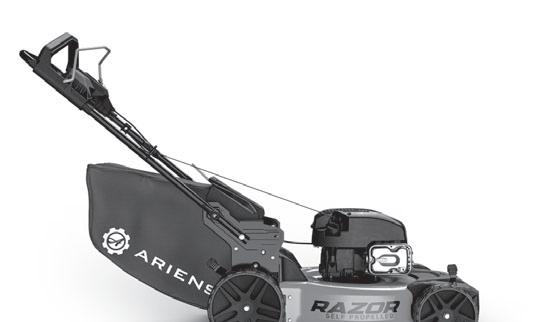








3. Geometric shapes: Modern homes have strong horizontal and vertical elements that showcase geometric shapes in their designs. Contemporary homes often have flat roofs, while modern homes may not.
4. Large, unadorned windows: Most modern homes
showcase a lot of natural light by utilizing large windows that are not covered up by heavy window treatments or elements like shutters and thick trims. Large windows are the focus of the interior and shift attention to the view outdoors.
5. Open floor concept: A hallmark of modern interior design, the open concept floor plan removes many of

the walls that tend to separate common areas of a home. This helps to foster the spread of natural light and maintains the emphasis on simplicity of design.
6. Smart elements: Thanks to the proliferation of smart technology, smart homes are cropping up with greater frequency. While smart devices can be included in any home style, they tend to feel like they were designed specifically for modern homes. In a similar vein, modern homes may include environmentally friendly elements, such as solar panels, upcycled materials,


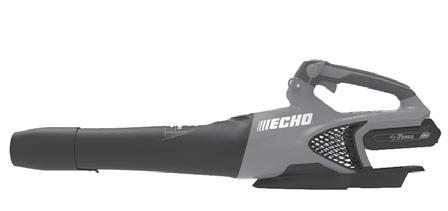




added insulation, and energy efficient lighting.
7. Updated kitchen spaces: The clean lines and attention to technology and open space generally extends to modern kitchens. Modern kitchens tend to feature efficient, toptier appliances with additional storage and space amenities that keep the room from feeling cluttered.
While some may consider modern homes austere, many others are right at home among their clean lines and airy spaces.


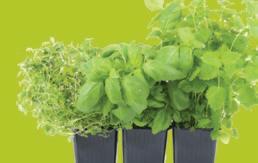




Vegetables need a certain number of growing days with ideal conditions in order to mature and produce a viable yield. These conditions vary depending on the vegetables being grown, with plants thriving in key zones across the country. The gardening resource Fine Gardening says certain vegetable

varieties are specially bred for, or may be best suited to, certain climates. Knowing which vegetables are ideal for where you live can give your garden the best chances for success.
The first step is reviewing the USDA Hardiness Zone Map to determine your specific climate zone. Canada also has a Plant
Hardiness Zone map. These maps are based on the extreme minimum temperatures in the zones, and can be a useful tool in determining which plants will thrive where you live.
Additional variables to consider include the amount of precipitation the area gets, average humidity, maximum temperatures, and soil conditions. Here’s a look at the best produce for certain regions of the country based on hardiness zones.
Zones 1 and 2
Located in Alaska, the northern continental United States, high mountains, and the upper latitudes of Canada, this zone features
long, cold winters and the shortest growing season (April to September). The best plants will be those that require short intervals between planting and












harvest, like asparagus, lettuce, kale, broccoli, and vine tomatoes.
Zones 3 and 4
This zone encompasses the










uppermost United States and cool mountain regions, as well as wide swaths of British Columbia, Alberta, Saskatchewan, Manitoba, Ontario, and Quebec. The growing season in zones 3 and 4 lasts from April to October. Vine tomatoes, broccoli, kale, lettuces, spinach, strawberries, sweet peas, pole beans, and potatoes are some of the plants that will do well in these zones.
Zones 5 and 6
Zones 5 and 6 encompass much of the continental United States, the southernmost Canadian provinces and coastal Nova Scotia. The growing season in zones

5 and 6 starts in March and can extend into October. Try melons, squashes, corn, strawberries, lettuce and other greens, and tomatoes in these zones.
Zones 7 & 8



With a growing season from March to November, these zones are marked by long, hot summers and mild winters, conditions common to the southwest and many southern states. Corn, tomatoes, melons, collard greens, carrots, and others are good choices for this region.
Zones 9 and 10





These zones include the deep South of the United States, Florida, southern California, and much of the Gulf coast. The growing






season is quite long, ranging from February to November. In addition to much of the previously mentioned produce, plants like peppers, citrus, yams, peaches, figs and bananas have the best chances of success in these zones.

Zones 11 to 13
These are the most tropical zones and are found in Hawaii and Puerto Rico.


Growing seasons in zones 11 to 13 extend yearround. Only plants that require the coldest temperatures (sub-40 F) will not do well here.

Knowing the hardiness zone can help gardeners choose the best plants for their gardens.


















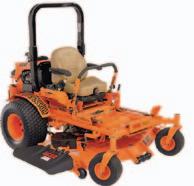







































Homeowners rely heavily on electricity to power their homes and their lives. Coal, nuclear power and water energy help to generate this electricity. Without electricity, lights wouldn’t work, digital devices wouldn’t charge and cities would come grinding to a halt. This is experienced on a local level when power outages occur.




Homeowners may need to diversify some of the resources they have at home to be able to make it through an electrical power outage successfully. Investing in solar power panels can be one way to generate electricity even when power has been disrupted. In addition, pellet stoves or woodburning stoves can serve as alternative heat sources as well as cooking surfaces if traditional forced air systems are rendered useless during an electrical






outage. Homes equipped with a coalfired smoker can complement gas-powered grills for outdoor cooking as well for those who have electric ranges and ovens. Solar-powered device



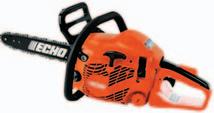





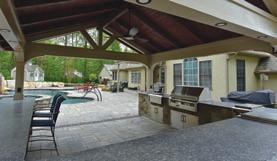


chargers can provide power to phones or tablets during electrical outages. Having a few different options on hand can help people make it through power outages unscathed.




